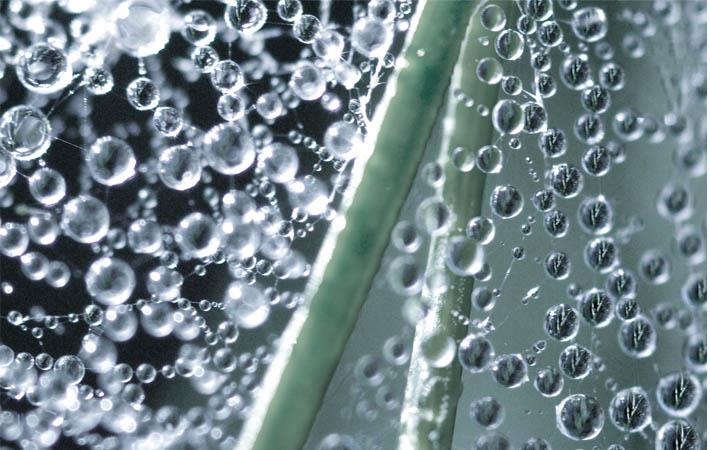Interviews
Mammut starts analysis of its carbon dioxide footprint
17 Feb '20
3 min read

Pic: Mammut
Mammut has started analysis of its carbon dioxide footprint in a first step towards its goal of 30 per cent reduction in greenhouse gases by 2030 compared to the 2018 reference value. This goal is the result of Mammut being a signatory of the UN Fashion Industry Charter for Climate Action. The company has already collected all greenhouse gas-relevant data.
The greenhouse gas reduction targets are one of the central pillars of Mammut’s “We Care” sustainability strategy. In order to achieve the goals of the UN Fashion Industry Charter for Climate Action, the first step is a precise evaluation of the carbon dioxide company footprint. The company has meticulously collected all greenhouse gas-relevant data. This includes the headquarters in Seon, all subsidiaries and Mammut stores. In addition, the emissions from the transport of goods and people were analysed, right through to the product manufacturing processes for the entire product range. The emission data collection process was carried out in accordance with the Greenhouse Gas Protocol standards for companies.
This standard distinguishes between three different emission sources, which are designated as Scope 1, 2 and 3. Scope 1 covers all greenhouse gas emissions that occur directly at the company's location (eg via the car fleet, heating or ventilation). Scope 2 refers to all indirectly generated emissions that arise from the use of energy and electricity at the company's sites. Scope 3 covers the emissions generated by processes upstream or downstream of the company. This means that greenhouse gas emissions generated in the production of clothing, shoes or hardware for Mammut, as well as the transport of these goods from factory to factory to the end customer, including the use and disposal of the products, fall under this category.
Finally, the data form the basis for the baseline survey of Mammut's greenhouse gas footprint for the year 2018. In 2018, the company produced emissions in the range of 58,000 t carbon dioxide-eq across all processes and activities. This corresponds to approximately 15'500 passenger vehicles, driven on average over one year. The emissions from Scopes 1 and 2 are of little significance in the overall balance, at around 5 per cent. Of particular relevance are the greenhouse gas emissions from Scope 3 (95 per cent). Within this third scope, the majority of emissions are generated during product production (approx 72 per cent of total 58,000 t greenhouse gas emissions).
“For this reason, we evaluate the product groups, materials and processes that are particularly greenhouse gas-intensive in a first step, and in a second step develop scenarios and prototypes that aim to reduce emissions as efficiently as possible. The evaluation and test phase has already started and the first projects have been launched. They will now be integrated into the existing We Care strategy and further strengthen the issue of sustainable production,” the company said.
The greenhouse gas reduction targets are one of the central pillars of Mammut’s “We Care” sustainability strategy. In order to achieve the goals of the UN Fashion Industry Charter for Climate Action, the first step is a precise evaluation of the carbon dioxide company footprint. The company has meticulously collected all greenhouse gas-relevant data. This includes the headquarters in Seon, all subsidiaries and Mammut stores. In addition, the emissions from the transport of goods and people were analysed, right through to the product manufacturing processes for the entire product range. The emission data collection process was carried out in accordance with the Greenhouse Gas Protocol standards for companies.
This standard distinguishes between three different emission sources, which are designated as Scope 1, 2 and 3. Scope 1 covers all greenhouse gas emissions that occur directly at the company's location (eg via the car fleet, heating or ventilation). Scope 2 refers to all indirectly generated emissions that arise from the use of energy and electricity at the company's sites. Scope 3 covers the emissions generated by processes upstream or downstream of the company. This means that greenhouse gas emissions generated in the production of clothing, shoes or hardware for Mammut, as well as the transport of these goods from factory to factory to the end customer, including the use and disposal of the products, fall under this category.
Finally, the data form the basis for the baseline survey of Mammut's greenhouse gas footprint for the year 2018. In 2018, the company produced emissions in the range of 58,000 t carbon dioxide-eq across all processes and activities. This corresponds to approximately 15'500 passenger vehicles, driven on average over one year. The emissions from Scopes 1 and 2 are of little significance in the overall balance, at around 5 per cent. Of particular relevance are the greenhouse gas emissions from Scope 3 (95 per cent). Within this third scope, the majority of emissions are generated during product production (approx 72 per cent of total 58,000 t greenhouse gas emissions).
“For this reason, we evaluate the product groups, materials and processes that are particularly greenhouse gas-intensive in a first step, and in a second step develop scenarios and prototypes that aim to reduce emissions as efficiently as possible. The evaluation and test phase has already started and the first projects have been launched. They will now be integrated into the existing We Care strategy and further strengthen the issue of sustainable production,” the company said.
Fibre2Fashion News Desk (SV)
Popular News
Leave your Comments
Dr. Michael Duetsch & Man Woo Lee
UPM Biochemicals and Dongsung Chemical
Rajesh Mittal
Cedaar Textile Private Limited
































-Ltd..jpg?tr=w-120,h-60,c-at_max,cm-pad_resize,bg-ffffff)





.jpg?tr=w-120,h-60,c-at_max,cm-pad_resize,bg-ffffff)
.jpg?tr=w-120,h-60,c-at_max,cm-pad_resize,bg-ffffff)






